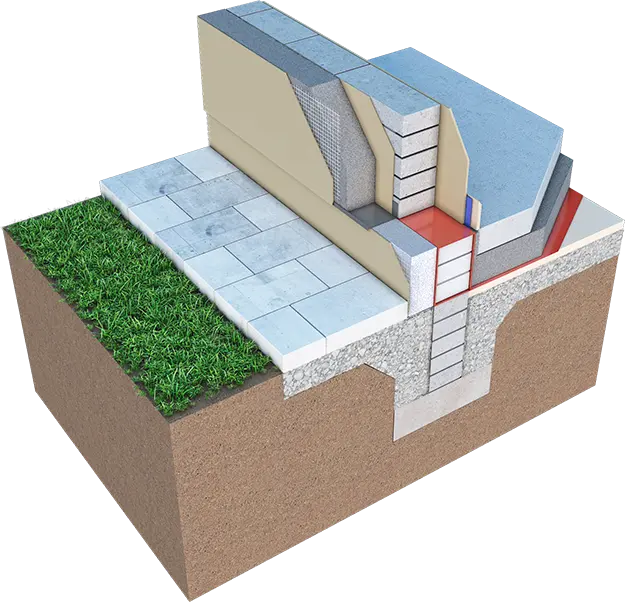Which Insulation Method is Best for Your Home: External Insulation, Internal Insulation, or Cavity Fill?
- Mihai
- Jan 14, 2024
- 3 min read
Updated: Jun 3

Choosing the right wall insulation method is essential for improving your home's energy efficiency, reducing heating bills, and enhancing comfort. In this guide, we compare external wall insulation, internal wall insulation, and foam cavity wall insulation—breaking down their advantages, disadvantages, and suitability for different property types.
✅ External Wall Insulation: Advantages
Lower Heating Costs: Helps maintain indoor temperature, significantly cutting energy bills.
Improved Comfort: Keeps interiors warmer in winter and cooler in summer.
Sound Insulation: Reduces noise pollution from busy streets.
Weather Protection: Shields your home’s exterior from wear and moisture.
Aesthetic Upgrade: Offers the opportunity to refresh the facade and boost curb appeal.
❌ External Wall Insulation: Disadvantages
High Upfront Cost: Installation can be expensive.
Moisture Risk: Poor installation may lead to damp or mold.
Requires Skilled Labour: Not a DIY-friendly option.
Aesthetic Changes: Can alter the look of traditional or listed buildings.
Vulnerability to Damage: Impact from weather or physical contact may degrade the finish.
✅ Internal Wall Insulation: Advantages
Energy Efficient: Greatly reduces heat loss, especially in older solid-wall homes.
Preserves Exterior: Maintains the visual integrity of protected or period properties.
Cost-Effective: Generally cheaper than external insulation.
Room-by-Room Flexibility: Allows for phased installation, reducing disruption.
❌ Internal Wall Insulation: Disadvantages
Reduces Floor Space: Particularly noticeable in smaller homes.
Potential Condensation Issues: If vapor barriers are poorly installed.
Thermal Bridging Risks: Can occur at junctions with floors, windows, or party walls.
Disruptive Work: May involve moving furniture, wiring, or plumbing.
✅ Foam Cavity Wall Insulation: Advantages
Highly Efficient: Polyurethane foam offers superior thermal performance.
Lower Bills: Retains heat effectively, reducing heating demand.
Mold Resistance: Helps limit moisture transmission when installed correctly.
Environmental Impact: Improved efficiency = lower carbon emissions.
Minimal Disruption: Installed via drilled holes without major construction.
❌ Foam Cavity Wall Insulation: Disadvantages
Installation Costs: More expensive than blown mineral wool.
Potential Shrinkage: : The materials can shrink or pull away from the wall framing, reducing their insulative properties
Water Ingress Risk: If the cavity is compromised, trapped moisture can cause problems.
Not Suitable for All Homes: Older solid-wall buildings often lack suitable cavities.
Ventilation Impact: Incorrect application may restrict airflow, affecting indoor air quality.
🏠 Which Insulation Type Is Right for Your Home?
Criteria | External Insulation | Internal Insulation | Foam Cavity Insulation |
Cost | High | Moderate | Moderate–High |
Aesthetic Impact | Yes (external) | No | None |
Suitable for Older Homes | Sometimes challenging | Ideal | Not suitable for solid walls |
Moisture Risk | Medium (if poorly installed) | Medium–High | Medium |
Disruption | External work only | Internal disruption | Minimal |
Efficiency | High | Moderate–High | Moderate–High (if no shrinkage) |
🔍 Final Thoughts
External Wall Insulation is ideal for modernising the façade and increasing efficiency but comes with higher costs.
Internal Wall Insulation is great for conservation areas or when external changes are restricted—but be mindful of space loss and condensation risks.
Foam Cavity Wall Insulation is one of the most efficient solutions—provided your home has suitable cavities and good moisture control.
Before making a decision, consider:
Your property type (solid wall or cavity),
Your budget and aesthetic preferences,
Existing ventilation and damp issues.
Need Expert Advice?
At MTS DNC ENERGY CONSULTANTS LIMITED, we offer tailored technical assessments, BER surveys, and insulation guidance to help you make the best choice for your home.
📩 Contact us for a detailed property assessment and grant support guidance under SEAI and other available schemes.
⚠️ Disclaimer:
This post provides general information about insulation methods and should not be used as a substitute for professional advice. Always consult with a qualified energy assessor or insulation contractor before undertaking any works.







Comments